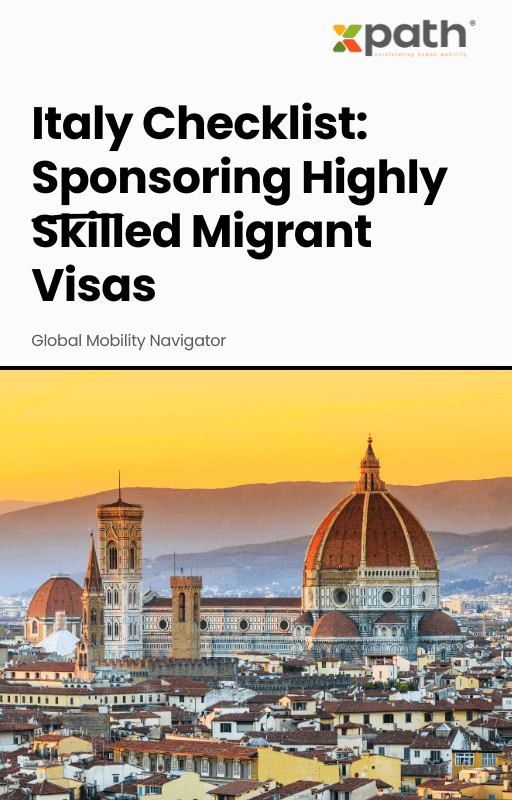Italy Checklist: Sponsoring Highly Skilled Migrant Visas
Grab a copy of a guide to international employee relocation
View E-book
In a recent LinkedIn Live event titled “Data Analytics in HR and Global Talent Management,” a panel of HR experts shared valuable insights on how data analytics is reshaping the landscape of Human Resources. Hosted by Dana Teodorescu, the discussion covered crucial topics including trends in AI, risk mitigation, talent acquisition, compliance, and employee engagement. Here, we summarize the key points discussed, offering best practices and strategies for integrating data analytics into HR processes.
Data analytics has become an essential tool in HR for enhancing decision-making processes. It helps HR professionals move beyond intuition, allowing them to make data-driven decisions. The use of analytics can optimize talent acquisition, streamline compliance monitoring, and improve employee engagement strategies.
One of the most significant challenges in HR today is talent acquisition and retention. The market is highly competitive, and finding the right talent can be difficult. Once hired, retaining employees is another hurdle, often due to issues like lack of engagement or inadequate policies. Data analytics can help identify gaps in the recruitment process and retention strategies, enabling organizations to make necessary adjustments.
Artificial Intelligence (AI) and Machine Learning (ML) are revolutionizing HR processes. These technologies enable automation in candidate sourcing, screening, and even onboarding. AI can also reduce bias in hiring by using objective criteria for selection. Moreover, AI-driven analytics provide insights into employee performance, helping HR departments to personalize learning and development programs.
Global mobility and compliance are critical aspects of HR, especially for multinational companies. Data analytics tools can track changes in immigration laws, tax regulations, and labor laws, helping companies remain compliant. These tools also assist in financial risk management by providing detailed cost projections and real-time tracking of expenses.
While data analytics offers valuable insights, the panel emphasized the importance of balancing data-driven decisions with human intuition. HR professionals bring invaluable experience and understanding of cultural nuances that data alone cannot provide. Combining analytics with human expertise ensures a more holistic approach to HR strategies.
Data analytics is transforming HR and global talent management, offering numerous benefits from streamlined compliance to improved employee engagement. However, the integration of these technologies should be approached with a balanced perspective, combining data-driven insights with human expertise. By following best practices and keeping an eye on future trends, HR professionals can leverage data analytics to create a more efficient and inclusive workplace.
For more insights and updates on HR and global talent management, follow our LinkedIn page and stay tuned for upcoming events and summits.
To learn more about xpath.global’s global mobility management system, book a meeting here: Book a demo – Human Resource Professionals – xpath.global

Italy Checklist: Sponsoring Highly Skilled Migrant Visas
Grab a copy of a guide to international employee relocation
View E-book